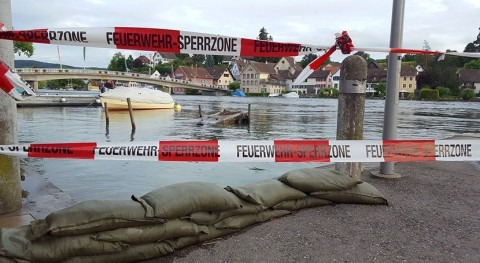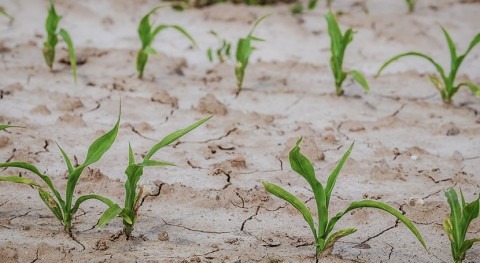Floodplain landscapes are essential for drinking water supplies because they contain valuable water resources. This makes it all the more important to protect them from contamination. Dr. Julia Derx and a team of researchers wanted to find out how certain faecally excreted pathogens enter the water as a result of extreme weather events.
Thus, the interdisciplinary team investigated the influence of heavy rainfall and flooding on water quality in alluvial areas. For this purpose, they developed a model, which they then successfully tested in a backwater area of the River Danube, near the downstream city border of Vienna. The researchers published the study results on July 14, 2021 in the journal Frontiers in Microbiology.
Weather events can affect drinking water quality
On hot summer days, we often long for a cooling rain shower. But when heavy rains or floods occur, they threaten the water resources of our floodplains. Contaminants can enter surface water from sewers, wildlife or livestock. This is a concern for several reasons, as Julia Derx from the Research Unit for Water Resources Management explains, "Alluvial areas along large rivers are not only important natural habitats and important for flood control, but they also contain valuable resources for drinking water production. Human wastewater discharges and faecal deposits from livestock and wildlife therefore pose potential threats to these ecosystems in terms of water supply."
Since heavy rainfall is expected to become more frequent and occur with higher intensity in the future, scenarios were modeled to assess its consequences. Julia Derx and her team developed a model to determine the impact of different faecal sources, entering by flood water or rain water, focusing on the safe extraction of drinking water from wells of riverine floodplains. The research team used data from human- and animal-associated genetic faecal indicators, so-called MST markers.
Who causes the contamination?
"MST markers are diagnostic DNA regions of microorganisms that live in the gastrointestinal tract of humans and animals and are host-associated. Consequently, we can distinguish whether faecal contaminants are of human origin, or originate from (wild) pigs, ruminants or other animals," says Katalin Demeter. Integrated into the model (QMRAcatch), the model can thus be calibrated to the various input pathways into surface waters. The team of the Interuniversity Cooperation Center "Water and Health" (ICC Water & Health) - consisting of researchers from the TU Wien, MedUni Wien and Karl Landsteiner Private University for Health Sciences - investigated the influence of heavy rain, which dissolves faecal pellets from the soil, as well as river water polluted with human wastewater. "Our study shows that in our study area, the two pathways (rainfall-induced release of pathogens from animal faecal deposits and flooding) result in similar exposures with regards to the two pathogens studied, Cryptosporidium and Giardia. In order to achieve sufficient protection against infections, pathogen concentrations must be reduced to a similar degree in raw water," said Prof. Andreas Farnleitner, head of the ICC Water & Health.
In drinking water production, the soil takes over part of the treatment as the water percolates through various layers of sand and gravel. Additional treatment is provided by the subsequent disinfection of the groundwater. Drinking water quality is continuously monitored to ensure that the requirements of the Austrian Food Codex and the Drinking Water Directive are met.
Clean drinking water
In order to ensure a safe drinking water supply, the system must be considered holistically in the sense of the World Health Organization (WHO) - from the point of extraction to the use of the water. "Our modeling approach enables this for different river floodplains by quantifying the different input pathways and their effects on the microbiological water quality," explains Prof. Alfred Paul Blaschke. In order to be able to take concrete measures for the protection of water bodies, site-specific measurements of microbiological water quality are required, both at the pathogen sources as well as at the point of water use. The microbiological toolbox should contain standard faecal indicators, host-associated MST markers as well as pathogens.








